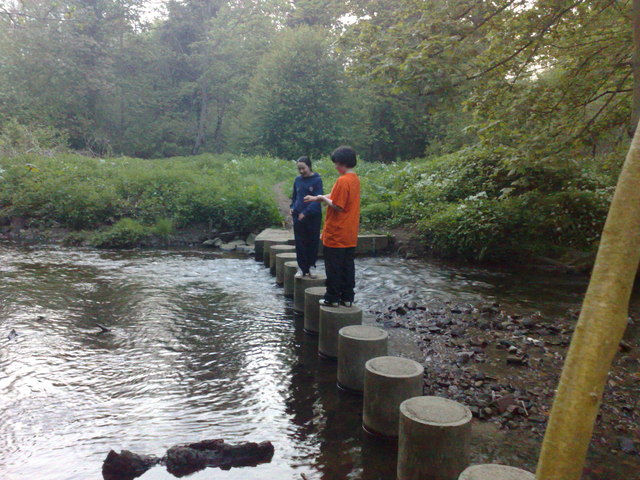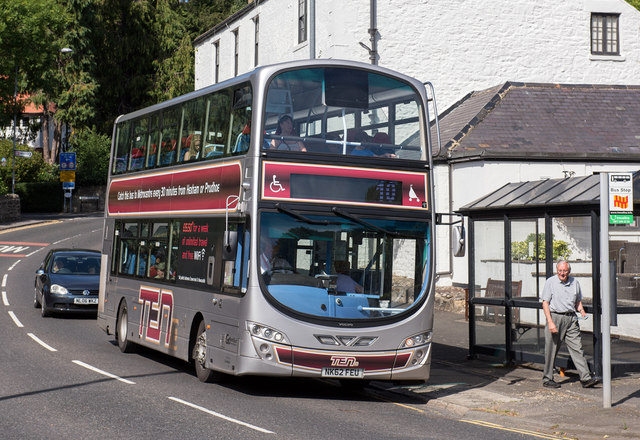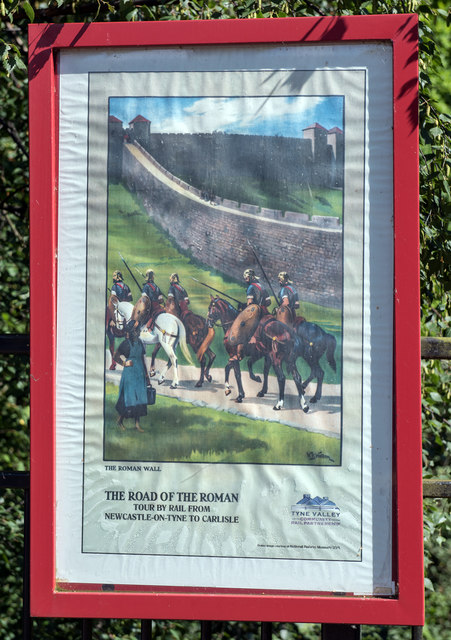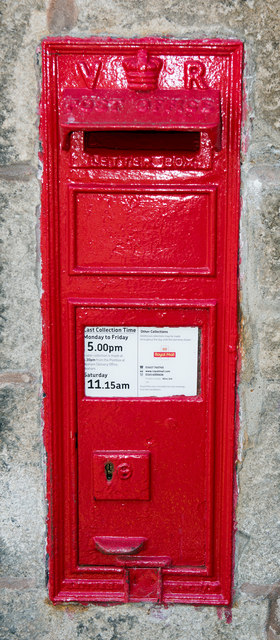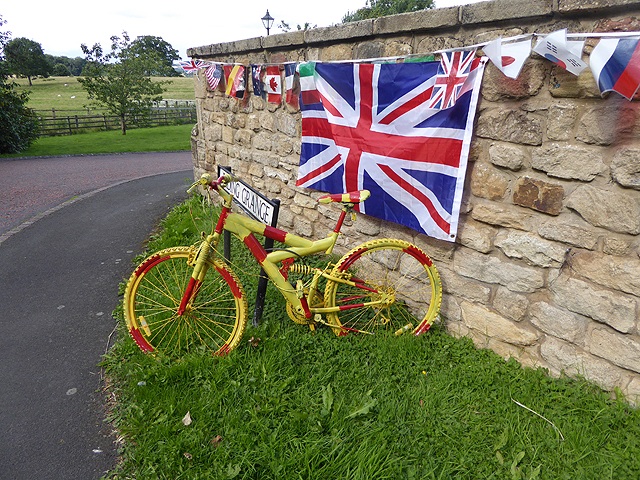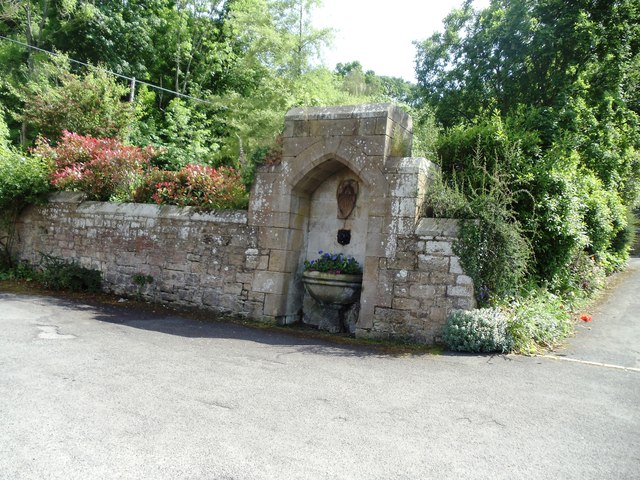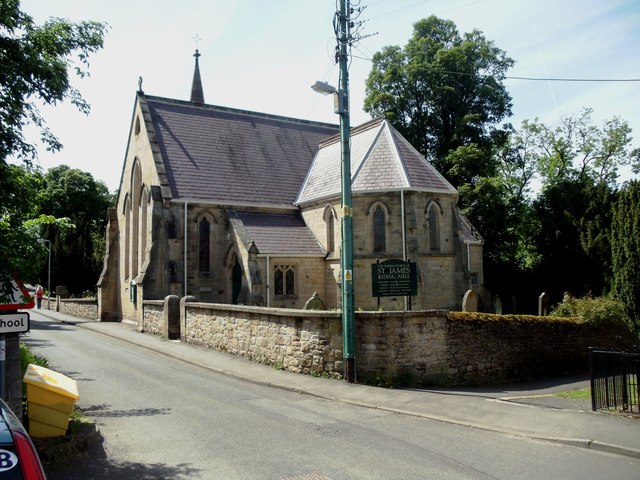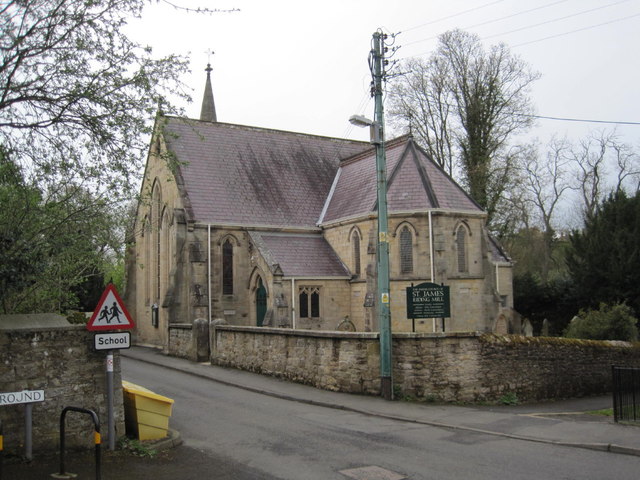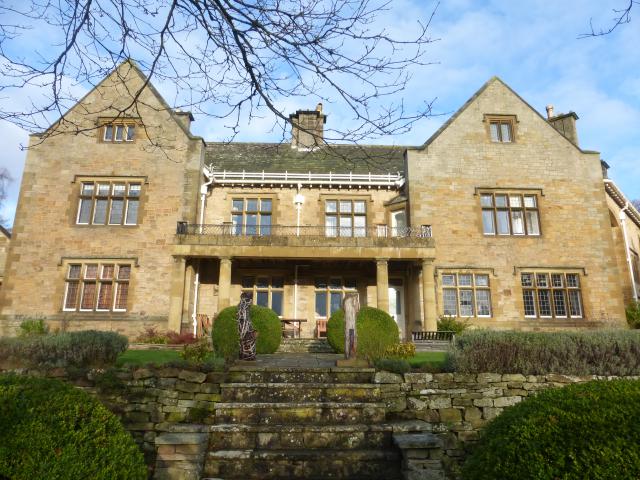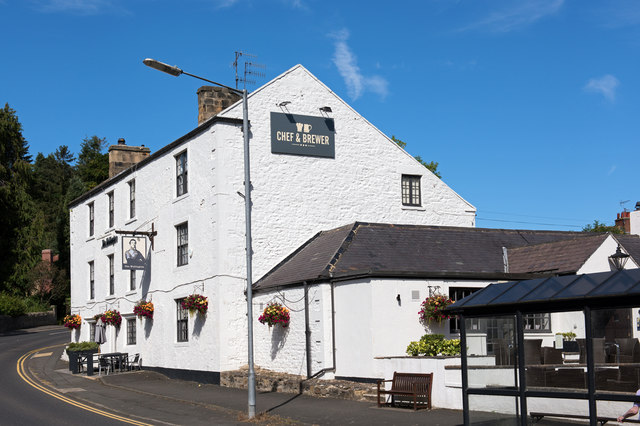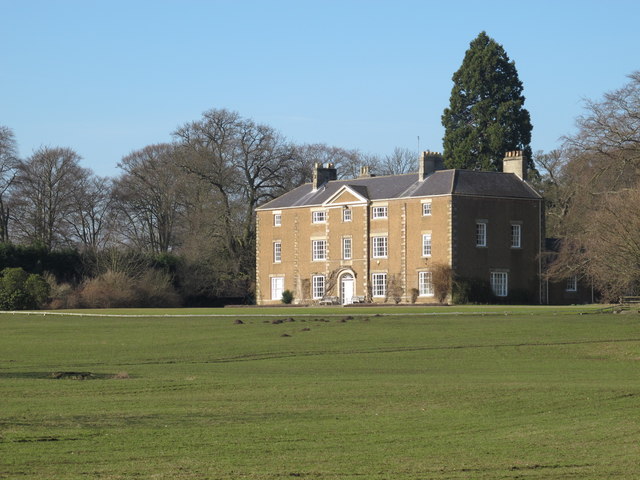Topics > Northumberland > Riding Mill
Riding Mill
Riding Mill is a village by the south banks of the River Tyne in Northumberland, located about 2 miles south-east of Corbridge and 5 miles east of Hexham. Riding Mill grew rapidly during the 19th century, incorporating the ancient hamlets of Broomhaugh and Riding, which were historically separated by March Burn, a stream which flows into the Tyne nearby.[1] The local civil parish is known as Broomhaugh and Riding. The Wellington Inn at Riding Mill is a listed building which dates back to 1660. St James' Church, built in 1858, is also a listed building. Styford Hall is located nearby, on the opposite side of the Tyne; but most of the village of Styford was lost in the Great Flood of 1771, after which some of the inhabitants relocated to Broomhaugh.[2]
RIDING, a township, in the parish of Bywell St. Andrew, union of Hexham, E. division of Tindale ward, S. division of Northumberland, 6 miles (E.S.E.) from Hexham; containing 132 inhabitants. A bridge was erected here in 1822, across the dangerous ford of Dipton burn. The Roman Watling-street, and the road from Newcastle to Hexham, pass through the township, and the Carlisle railway in the vicinity.
Extract from: A Topographical Dictionary of England comprising the several counties, cities, boroughs, corporate and market towns, parishes, and townships..... 7th Edition, by Samuel Lewis, London, 1848.
Riding Mill is a village near Hexham in Northumberland, England. It is served by Riding Mill railway station and by a frequent bus service on the route from Hexham to Newcastle.
Riding Mill is notable as the location of Riding Mill pumping station. Up until here the water released from Kielder Water uses the River Tyne but at Riding Mill it is pumped to parts of Tyne and Wear and over the hills to Teesside.
As you leave the village heading towards Hexham, Hollin Hill Terrace is situated on the left. Very little information is available on these eight dwellings but they are a fine example of Victorian architecture. This terrace was not shown on maps of the area prior to 1850, but appear on a map dated between 1850/1894.
During 2008 the village was named the most expensive place to live outside London
History
Mackenzie (1825) wrote — The Riding Mill is built upon a mountain brook called Dipton Burn – which it was often hazardous to pass, but in 1822 a good bridge was built across it. It is in length and in breadth. In recent times the road from the south coming into Riding Mill was a notorious traffic hazard because of the steep slope and the bends. A safety pit of small stones was constructed to halt vehicles that got out of control. The hill was also difficult to climb the other way, but a new road bypasses Riding Mill.
Governance
Riding Mill is in the parliamentary constituency of Hexham.
Landmarks
The corn mill existed in mediæval times and was granted to the monastery at Blanchland. It was a good source of profit because all the tenants had to bring their corn to be ground here and hand mills were forbidden by law. Since crossing the burn was difficult a pack horse bridge was constructed 1599-1600. In recent times the mill has been converted into a residence, but its appearance has been kept. The water wheel was of the overshot type and a dam above the mill retained the water for its use.
The large house opposite became the Wellington Hotel. It is a handsome structure and carries the date 1660 above the door. The letters are considered to be the initials of Thomas Errington and his wife Ann Carnaby. T.B. has come about by the Boultflour family living here; they were millers and probably altered the E into a B. The house gained some notoriety by its association with witchcraft. Anne Armstrong, the witch finder, lived at Birchesnook. In 1673 she accused Anne, wife of Thomas Baites of Morpeth, a tanner, of frequenting witches' meetings at Riding Bridge-end, where she danced with the devil. She also claimed to have seen Anne Forster of Stocksfield, Anne Dryden of Prudhoe and Lucy Thompson of Mickley, supping with theire proctector which they called their god in the Riding house. But the charges were dismissed at the Morpeth Quarter Sessions, the magistrates not being impressed with the evidence.
Other significant buildings include Oaklands Manor, Wentworth Grange, Underwood Hall, and former vicarage The Glebe.
Transport
;Road
Riding Mill is linked to Newcastle and the A1 by the A695 which passes through the village. The A68 road lies about to the east, linking it to Jedburgh and Darlington.
;Railway
The village is served by Riding Mill railway station on the Newcastle and Carlisle Railway, also known as the Tyne Valley Line. The line was opened in 1838, and links the city of Newcastle upon Tyne in Tyne and Wear with Carlisle in Cumbria. The line follows the course of the River Tyne through Northumberland.
Passenger services on the Tyne Valley Line are operated by Northern Rail and First ScotRail. The line is also heavily used for freight.
Public services
The only remaining village pub is 'The Wellington' as the two others have closed (The Railway and The Broomhaugh). The Wellington, owned by the Chef and Brewer group is open 7 days a week, serving food from noon until 9pm.
Until 2006 there was a Post Office on the main road. Until 2013 Bobby's General Stores was open until Bobby died, with the shop permanently closing soon after.
Notable residents
- Tom Graveney - England test cricketer
- Robert Smith Surtees, Victorian novelist and founder of the hunting magazine "The Field" born at The Riding (cottage)
Visit the page: Riding Mill for references and further details. You can contribute to this article on Wikipedia.
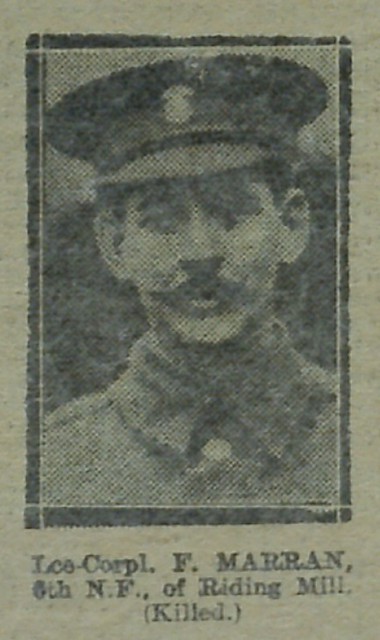
from IllustratedChronicles (flickr)
F Marran - ?th NF - Riding Mill (Killed)
Pinned by Simon Cotterill
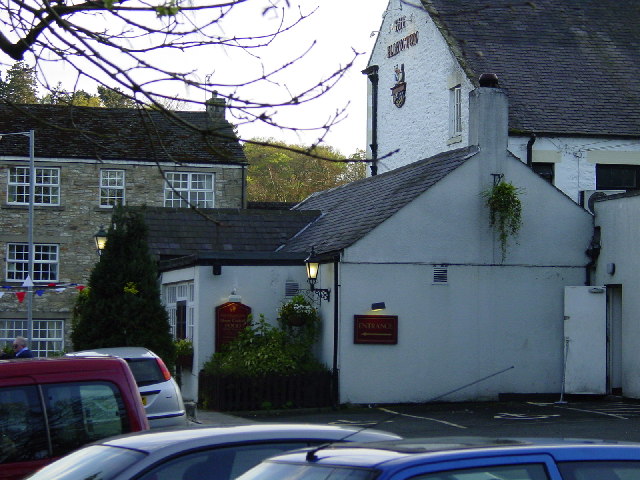
from Geograph (geograph)
Riding Mill - The back of The Duke of Wellington, on a busy Sunday night
Pinned by Simon Cotterill

from http://www.ridingmill.org/
Broomhaugh & Riding Parish Council
- Website of the Parish Council, including a section on parish history.
Added by
Simon Cotterill
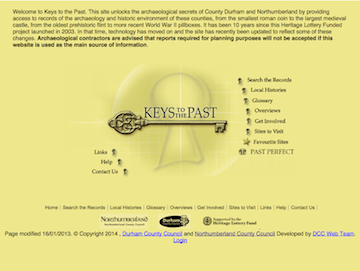
from https://keystothepast.info/se…
Local history: Broomhaugh and Riding (Northumberland)
- "Broomhaugh and Riding parish is located in southern Northumberland on the south bank of the River Tyne just south-east of Corbridge. The northern part of the parish is bounded by …
Added by
Simon Cotterill
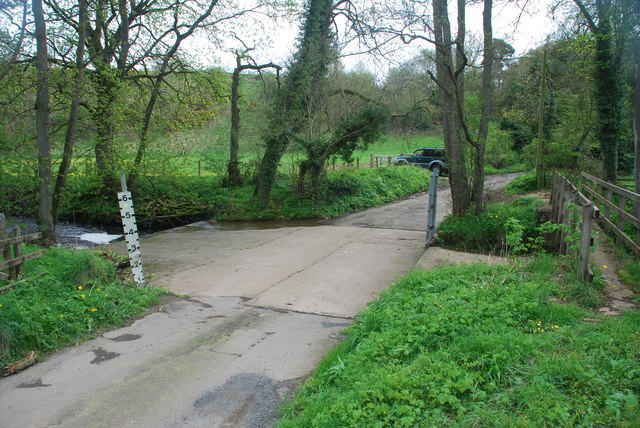
Co-Curate Page
Broomhaugh & Riding Civil Parish
- The main settlements are Riding Mill and Broomhaugh. There are also a number of farms / small hamlets in the parish, including White Hemmels, Red Hemmels, Low Shilford, High Shilford, Riding …
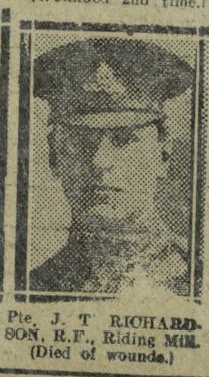
from IllustratedChronicles (flickr)
Pte. J.T. RICHARDSON, R.F., Riding Mill, (Died of wounds).
Pinned by Simon Cotterill


from IllustratedChronicles (flickr)
F Marran - ?th NF - Riding Mill (Killed)
Pinned by Simon Cotterill

from Geograph (geograph)
Riding Mill - The back of The Duke of Wellington, on a busy Sunday night
Pinned by Simon Cotterill

from http://www.ridingmill.org/
Broomhaugh & Riding Parish Council
- Website of the Parish Council, including a section on parish history.
Added by
Simon Cotterill

from https://keystothepast.info/se…
Local history: Broomhaugh and Riding (Northumberland)
- "Broomhaugh and Riding parish is located in southern Northumberland on the south bank of the River Tyne just south-east of Corbridge. The northern part of the parish is bounded by …
Added by
Simon Cotterill

Co-Curate Page
Broomhaugh & Riding Civil Parish
- The main settlements are Riding Mill and Broomhaugh. There are also a number of farms / small hamlets in the parish, including White Hemmels, Red Hemmels, Low Shilford, High Shilford, Riding …

from IllustratedChronicles (flickr)
Pte. J.T. RICHARDSON, R.F., Riding Mill, (Died of wounds).
Pinned by Simon Cotterill
